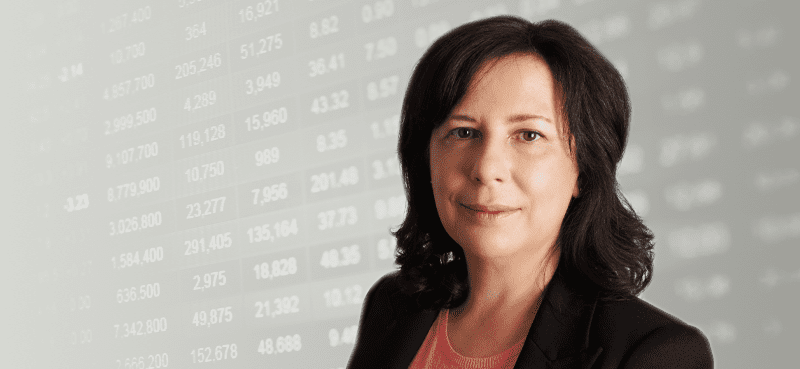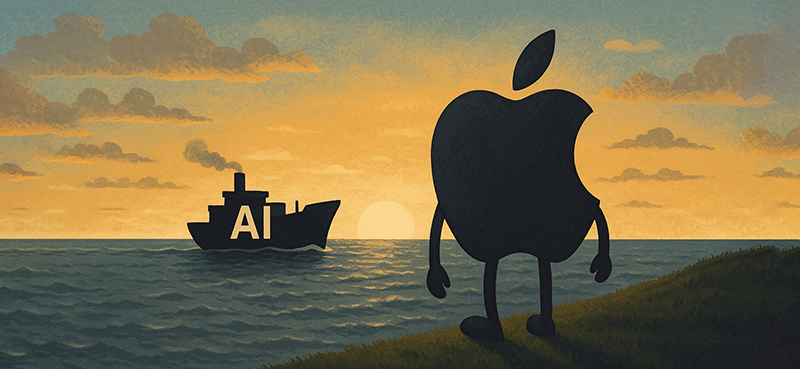Genia Turanova, editor of Moneyflow Trader and Unlimited Income here at Curzio Research, joins me to discuss why higher inflation and rising interest rates will help separate certain companies from the rest of the market… and one sector with massive upside potential. [0:45]
Moneyflow Trader was designed to help investors hedge against market risks and volatility. Since taking over the product two years ago, Genia has closed, on average, one triple-digit winner every 10 weeks!
She walks us through her strategy… why options don’t have to be scary… and the difference between shorting stocks and hedging your portfolio. [6:20]
But options don’t just help you protect against the downside… Genia explains how you also can use them to benefit from the upside. [16:20]
Finally, she shares her favorite ideas today—both on the short and long side. [18:05]
I wrap the show by explaining why Moneyflow Trader is one of my favorite products we offer—and why it’s perfect for the environment we’re currently in. [27:00]
Frank Curzio
The greatest strategy most investors will never use
- How inflation will separate the wheat from the chaff [0:45]
- A sector poised to benefit from current conditions [4:20]
- A walkthrough of Genia’s Moneyflow Trader strategy [6:20]
- Shorting stocks vs. hedging [11:00]
- How to use options to benefit from rising prices [16:20]
- Genia’s favorite short and long ideas [18:05]
- Why Moneyflow Trader is perfect for today’s environment [27:00]
Wall Street Unplugged | 857
The greatest strategy most investors will never use
Announcer: Wall Street Unplugged looks beyond the regular headlines heard on mainstream financial media to bring you unscripted interviews and breaking commentary direct from Wall Street right to you on main street.
Frank Curzio: How’s it going out there? It’s February 17th. I’m Frank Curzio, host of the Wall Street Unplugged podcast, where I break down the headlines and tell you what’s really moving these markets. This is Thursday, which is interview day. And I’m bringing in someone special, someone I admire so much that she actually works for us. Her name is Genia Turanova, editor of Moneyflow Trader, also Unlimited Income. Those are two newsletters in the Curzio Research brand. Genia, how’s it going? How’s everything going? I haven’t had you on in a couple months.
Genia Turanova: Yes. So far so good. It’s been a crazy year, crazy couple of months. But I think we’ll be fine, and we’re doing fine.
Frank Curzio: Well, it’s funny because, what a different market is in just a few months, right? Where inflation’s now exploding, it’s not transitory anymore. We’ve seen the Fed about to aggressively raise rates. And every investment firm, which you track as well as I do, investment firms and sell side research are raising that number with three hikes. Now it’s four. Goldman Sachs raised it to six rate hikes. We have geopolitical risks with Russia and Ukraine. For the first time in a long time, many years, we’re seeing stocks really pull back. Some of these names got nailed. We’ve seen lots of names down 25% plus, but times are different. How do you feel about the marketplace right now? Because last time I had you on a little more bullish, but wow, what an about-face by the Fed, which, we’re not used to seeing.
Genia Turanova: Well, I’m a little bit more careful about the market, and that’s… And I have always been careful. So, that’s probably saying a lot. I think this market is much more dangerous than it used to be. It doesn’t mean it’s going to go down in a tailspin market as a whole, but there are several sectors that will continue to see increased volatility. We are very used to see tech going up, up, up. This is the ultimate momentum trade that work from home, related to the work from home idea, that the two or many COVID restrictions. Now, we’re going to be seeing the other side of this, higher rates, a tighter Fed balance sheet. And most likely, we’ll have more volatility in the higher price work from home tech names. At the end of it, we’ll see several winners and a lot of losers. But overall, that’s what the market is. It sorts the winners from the losers.
Frank Curzio: Yeah. And I want to bring everyone in here who’s hearing you for the first time, because you’re a former economics professor, so you follow this stuff even much more than I do. I love the economics. I try to make it interesting to everyone, because I just find it fascinating, relates to everything you buy, your neighbors and what they’re buying, and what you’re seeing. And I try to make it fun. What’s your thoughts on these rate hikes? I mean, are they priced in? I mean, that’s really the debate where the market’s holding up, but man, I’m hearing companies like Heineken say, “This is significant, we’ve never seen it. We have to have massive price increases, and it’s probably going to result in people almost changing their habits of drinking beer.”
Frank Curzio: Right? It’s not a joke anymore, it’s not transitory. I thought it would start easing a bit, but we’re not seeing it with the latest numbers and supply chain issues. All of a sudden, we were hearing from Ford and GM. And again, this is a direct result of inflation and more demand, not of supply. I’m just surprised that six, nine months ago, everyone was saying, “Hey, it’s starting to ease.” And now, we have a couple companies that… The Under Armour has a warning for the first time saying, “We’re going to see supply chain issues.” And Intel actually came out and said, “We’re going to see this in chips through 2023.” I mean, I haven’t heard that forecast. I thought it was done and they were going, okay, mid-2022, through 2023. I mean, where are you on all this in terms of, is this priced into the markets right now?
Genia Turanova: I don’t believe inflation is priced into the market. It’s not bad for a company’s financial statements if they can raise prices. If we can handle that, they will continue raising prices and the profits will be okay. It all depends on whether the consumer, whatever the customers of that company is, the consumer or other businesses will be able to handle more of price increases. And it looks like we’re at the point where it’s going to be very hard to do. And companies like the Goodyear just plunged the other day because they said, “We are doing well, we are raising prices, but we can’t pass everything, or make all our costs to assure the prices or productivity increases.” That’s going to be continued long topic through the entire year.
Genia Turanova: We did see inflation, you and I, we did talk about it. We saw it before. We were making fun of the transitory term. But definitely it’s not, it’s not transitory. It’s not going to disappear by itself. And it’s definitely not a surprise to anybody who has been watching the market. On the other hand, there are commodities. They’re traditionally big winners in such markets. I don’t think we’ve seen the end of the commodity cycle. So, there are places in the market that are clearly underpriced, places that would be finding that balance over price increases of profitability and revenue growth. And there are still spots that are significantly overvalued.
Frank Curzio: I want to get into something that you said, because you’re expecting more volatility we’ve seen it a very, very long time. And I want to bring everyone in here again, because I created a product called Moneyflow Trader, which you took over about two years ago. And I feel like I threw you completely under the bus. Where I created this product for retail investors, where they have a hard time making money or protecting themselves, which professional investors do. And it’s not easy to do with understanding options. And I said, “Listen, this is an easy way to do it. You could buy puts, this is a great newsletter.” However, the last three years we saw the market go up 31%, 18%. I think it’s 28%, which is insane. Right? Of course, none of that was working, but this is used as a hedge, right?
Frank Curzio: You want to hedge a small position in your portfolio, and just in case when you have this volatility. But now this newsletter has come into favor, it makes a lot of sense. Take us through the strategy here, because I’m getting lots of questions. I tried to tell everyone in November, December, and this is when the Fed came out and Senator Powell was like, “Look, it’s not transitory, we’re going to have to raise rates.” And then, I was pushing this saying, “Now’s the time for this product. This is why we created this product.” Right? I know if you’ve invested, you’ve taken losses and I get it. But that means everything over your long positions have done very, very well. So you should be okay, just hedge in a small part of your portfolio with the opportunity that if things really get bad, that small position could result in 30, 40% of your entire portfolio. Because it’d be big winners.
Frank Curzio: Talk about the product and a strategy, because I think out of all the products, every single one that we have, or that you’ll find out there, this one I think is the most important, most relevant over the next 12, 18 months, even two years for investors. Talk about that strategy and how it favors retail investors, and how they can protect their portfolio.
Genia Turanova: Right. As we all know, investing is important. You want to be in the market over as long as you can, really, because there are volatility, sell-offs, surprise the clients let you pick up more shares. But you want to stay in the market. And psychologically, it’s probably one of the hardest things to hold on through the client. And that’s pretty much why hedging is needed, and why you actually created the service, and why I bought the idea, and was very happy to run it for all these months and years. Because you want to be able to protect yourself against the unexpected, and the unexpected can happen at any time. COVID, nobody knew it was coming. And the plunge that we experienced in the… Barely any months from late February to late March is nothing like we’ve ever seen. You can buy protection during the plunge. In fact, you probably can, but you will make much less or you will eventually lose. You have to be ready. And that’s what hedging is, being ready for the unexpected.
Genia Turanova: For that, we use a specific device. We favor long dated puts, which means that you buy a good option which expires a few months to a year from now. Ideally, at least four to five months. And that gives you that cushion to stay with the market and not to be afraid of volatility. If the market action is negative, your put will protect you, and will make your money. And at best, the worst the market does, the better your put will be. Again, that’s insurance. Think about it as insurance, but the insurance windfall can be really helpful in the worst scenario. Which, with volatility as it is, and the Fed and the balance sheets, contraction, and the inflation not easing up, and all the geopolitical worries, you need protection. And that’s what our service is designed for.
Frank Curzio: Now, talk about the difference, because some people might not understand options. And when I say options, they get nervous. But talk about the difference between buying a put and actually shorting, because shorting has gotten so dangerous where some of the greatest short sells in the world have said that… Citron Research has said, “We’re not doing this no more.” Because you have the meme stocks, you have all these people, you could run them up, and there’s big short positions, which forces them to cover, which means they have to buy their position. And we’ve seen stocks go up, 70, 80, 90% in a couple weeks, sometimes in a couple days.
Frank Curzio: And it could really wreck you. This isn’t that, right? This is something different. But explain the difference between those two, because I have a feeling that a lot of people who listen to just haven’t bought options are probably saying, “Yeah, I don’t want to short the market. I can get crushed,” because you have unlimited risk. Right? The stock can go up forever and ever, and ever, right? And if you short, you can be in a lot of trouble. But explain the difference in those two, if you can.
Genia Turanova: Of course. Yes. Most people are familiar with shorting. You take a position in the stock you expect to decline, and you wait until that happens. If for that stock decline, you return the shares that you have borrowed and you pocket the profit. If that stock rallies though, you might be in trouble, just like you said about the name stocks. They rallied thousands of percent some of them, from almost nothing to hundreds of dollars. And any short position who would really be killing anybody that’s more than 100% losses. And that’s horrible. You can be wiped out with just one short position like this. So, the idea for shorting is that you can potentially lose much more than you’ve invested. Options are different, it’s a totally different animal. It allows you to take a similar stand. You expect the stock to fall, or that specific stock, you have the ability to buy a put option and stock rallies. Everything you can lose, the maximum you can lose is your investment. That put will expire worthless.
Genia Turanova: You spend, just hypothetically, $1,000, that’s your maximum risk. Your reward can be substantial because it’s a leveraged position. And smaller declines, thanks to the power of leverage, can bring you a much higher gain than the shorting. There’s one negative with both, that they do expire. I mean, you have to understand that there will be a time expiration. Every single put trade comes with the time expiration, which is the expiration date of your put, literally, that’s why you buy it. You buy XXX put with a January 2023 expiration. That’s on the third Friday of January 2023 that put would cease to exist. If your position is profitable for you, you can close it in cash, took the profits off the table, or you can close it in some other way. But most importantly, if your position is out of the money, your put will expire worthless. That characteristic of any good option you have to be aware of. So, there are risks specific to this, but there are advantages as well. And in our opinion, advantages way overweigh the risks.
Frank Curzio: No, makes sense. And what I love about you, is you came to me too, where you’re like, “Yeah, I just don’t want this strategy.” Right? It’s mostly this strategy, but you also said, “Listen, there’s some opportunities I’m seeing that I want to buy calls on that are great opportunities.” And while it’s been a bull market, you saw what could happen with this portfolio during COVID, right? Where you had a bunch of triple digit winners in a matter of weeks and months. And that’s the power of this strategy. But also, you did make money on certain calls, and you’ll take long positions as well on certain things that you like, where you’ve been all over energy. I think you made great profits on betting silver twice. Talk about that part as well, because you do like going along some positions.
Frank Curzio: I mean, most of the strategy is that. But also, you’re an analyst and you see all things. And from my perspective, doing this for such a long time, I always want to unleash talent where I don’t want to put handcuffs on everyone. Where if there’s a way that you can make money, I don’t want you to be like, nope. The only way you could do it, it’s like having a gold newsletter and saying you can only recommend gold. Well, we had a good six, seven year period where gold did nothing, right? Now, you’re stuck in this thing where you could say, hey, there’s other precious metals. I mean, we get into oil, maybe we get into different things. You want to provide that value, and you did for your investors. But talk about that as well, because you do go along some positions as well.
Genia Turanova: Absolutely. There two types of options, the put where you put options, which was discussed. You benefit, generally speaking, when they’re positioned the date you bet against the clients. Call options give you the right to buy a stock at a predetermined price. So, if you want to buy a stock, that’s really a bullish trade. So if you expect, I don’t know, say the market to appreciate, to go up over the next few months, because we’ve just been through a crazy period, volatility, you might want to buy co-option on the market. If you see energy or silver being crushed, but potentially benefiting from the inflation that we’re having, or about to have, you might want to take a long position. For that, a call option is the ideal device, ideal strategy, one of the best leverage traits that you can have.
Genia Turanova: Again, same disclaimers apply. There’s volatility involved, and there’s always and expiration. Every option will have an expiration. We want to account for this. We want to make sure that we don’t get stuck with an option so expiration. But sometimes we do, because the markets move very fast. With call option, again, everything, all you can lose is your investment. You can’t lose any more than that. That’s, again, the beauty of it, in my opinion.
Frank Curzio: Okay. Now, for the fun part. You love to share ideas. What are some of your ideas? One of them that you shared, which I love, which is controversial, is Ark, right? So, you talk about Cathie Wood, and we were talking just before this, you were saying, “What do you think about that?” Because you think that there’s a lot of risk in that. Talk about that, anything else, or throw out a few ideas that you like, even on the short or the long side.
Genia Turanova: Okay. On the short side, I think there’s more risk than the potential reward at this level, with this market, with the Ark innovation. So, there’s a brand new ETF, it’s literally been out for less than six months. And it’s called Tuttle Capital Short Innovation ETF, and symbol SARK. That’s a great way of playing against the high PE and volatile stocks that Cathie Wood tends to like, without applying leverage or without shorting them, really. They do it for you, of course. So, if Cathie’s fund goes bananas and appreciate 1000%, SARK will decline significantly. But it’s a great play. I think a relatively low risk play against high P/E stocks.
Frank Curzio: And we’re seeing a lot of those getting nailed. Right. I mean, even on the Roblox side is a name that I like, but you see a company that’s still growing. But at this level with inflation this high, with the Fed looking to raise rates, I feel like these companies don’t have any leeway to miss anymore. And even if they miss a little bit, they get destroyed. Where you’re like, okay, next quarter’s not going to be good, forget it. It used to be like, oh, well, we’re going to be good next year. The year after you’re going to see massive growth. But now in this type of market, I mean, you’re seeing a lot of these growth names who are not putting up those normal growth numbers, and just miss them by a little bit, you’ll see the things really get nailed 20% plus. And some of them are down, but yet, I definitely agree that they’re still super expensive in a market where you’re taking leverage out of it.
Frank Curzio: So, not as interesting. What about ideas on maybe the long side? And I know you’ve liked energy for a while, but I don’t know if you want to give energy a pick. But, what are some of the things that you like on the long side here? Because, look, it is a tough market, and I know that you’re not predicting an absolute crash, but there is sectors that are very over value here. And in the market going forward there’s going to be clear winners and losers, not everything like we’re used to seeing, right Genia, is going to go up at the same time. Where we are seeing separation, like FAANG names, right? I mean, look at what happened to Netflix, look what happened to Facebook. And on the opposite side, you saw Amazon report great numbers, and that went up a lot. You saw Microsoft and Apple report great numbers. So, even separation among those names, which usually always moves in tandem. And that’s the kind of market, I think, we’re going to expect going forward. But what are some of the long positions that maybe are sectors that you like here?
Genia Turanova: Well, I did mention that commodities usually benefit from inflation. Again, that’s given that hard assets tend to keep their value, but that’s pretty much what you can expect from opening a commodity. Oil is a very special commodity, because we had the historic demand distraction during COVID. Before that we had historic price distraction because of our oversupply. That this market was crushed by manufacturers that came in a row, including green energy. And now, it’s coming back because of historic under investment in the market. There’s a saying that the cure for low oil is low oil. The cure for high oil is high oil. We’re now having a cure, had a cure for low oil because nobody invested in it. Big integrated companies didn’t invest. Shale companies went out of business because of the low prices, which they them themselves caused. But again, that’s the supply and demand relationship in the oil market. It’s very unique to this specific area.
Genia Turanova: This said, again, it’s a unique sector within the oil sector, that absolutely destroyed with the years and maybe decayed under investment. That’s the oil service companies that you can invest in separately. Or the easiest way, probably, is get the oil service company through a couple of ETFs, like the OH or Van Eck oil service company specific. You’ll get Schlumberger, you’ll get the Halliburton. In fact, those two will probably be 60% of the entire tier, but it’s still diversified. Of course, you might say, yeah, that’s a crazy chart. You might say that it’s outperformed the market, it’s done so well over the past year, why would we buy? But click on-
Frank Curzio: And here’s why. In five years, right?
Genia Turanova: Yep. That’s way under the three year, I think it’s down about 30% over the past three years. So, you want value. This may not look like traditional value on a fee basis, but that’s value in the sense that their market has under bid this for so long that any potential growth improvement is totally not reflected, even in that current price. And there is growth improvement because we’re finally seeing more and more investment in oil, with oil production, oil wells, new capital spending from more the big and big companies. That goes into Schlumbergers, Halliburton, Baker Hughes, National Oilwell Varco. These companies will benefit and will continue to benefit for probably longer than even the large integrated oil. Integratives are safe, but this is where the excitement is, the action will be.
Frank Curzio: Yeah, the excitement and growth. And this is amazing too, I’m glad we brought up those charts when you look. And you can see that on YouTube if you’re watching, if not, could explain it to you, most people listen to this on iTunes. But you’re looking at a chart where you see some of these companies up tremendously, especially off the COVID lows. And even though your charts look, you’re like, holy cow, I missed it. I missed it. But when you put up a three-year chart, you see these things are still trading 30, 40% below, yet oil prices are probably higher, if I have to guess from three years ago. Not only that, these companies, I mean, came close to going bankrupt. People don’t realize how leveraged oil companies were.
Frank Curzio: And during COVID, and then everything stops and no demand. They’re being forced to cut costs dramatically. So now, you have these great companies cutting costs a ton, and now, you’re seeing demand come back. These stocks should be trading well above those three year highs, in my opinion. But again, it’s hard when you’re looking at a one year chart and saying, man, these things are up 500% or 300%. They’re still down 30, 40%, like we just showed. The Halliburtons and the Schlumbergers, and a lot of these service companies. So, it makes a lot of sense.
Genia Turanova: There will be pullbacks, well, should be pullbacks. Nothing goes up in a straight line. But there’s value, maybe even some dividends too. They used to pay much more, but now, they’re getting more business, more free cash. Yeah, they will be raising their dividends as well. The survivors are the strongest. There definitely were some that went bankrupt, like Diamond Offshore, before the drilling was completely disseminated. And maybe for a good reason. But a convention oil is going to see a lot of investment.
Frank Curzio: No, it makes a lot of sense.
Genia Turanova: And that’s right-
Frank Curzio: We covered so much. And I just want to say, I love having you on the team. You’re an amazing analyst, I respect you a lot. I love your work. I love the patience, because like I said, I feel like I threw her under the bus when I pitched this newsletter to you. And you were like, yeah, and we didn’t think the markets would go up so much. And the government would spend trillions and trillions of dollars to inflate this market, and keep inflating it even when things got better. But I think right now is a perfect time, we are seeing a lot of people inquire about it and ask for it. And I hope they do, because this is something that I think everybody needs, and to really protect themselves in a market that’s going to be extremely volatile. So, thank you so much for coming on, I really appreciate it. And I know you’ll join us again soon.
Genia Turanova: Thank you very much. I had fun. Thank you.
Frank Curzio: All right, take care. You know, guys, this is one of my favorite newsletters because it helps you make money and hedge your portfolio during extreme volatile times. Which, I feel a lot of retail investors do not know how to do, and have not done. And professional investors do this all the time. Genia has a whole training center on a site, explains how to buy puts. It’s written at a very easy level, which we like to do here. We like to write things very, very easily, this way you understand. She was explaining options. If you understand options, you’re probably like, all right, we get it. We know what a call is and a put. But we want to make sure that we’re bringing in our whole audience here, because that’s what we do. We want to explain it thoroughly. And people who know about options could have one minute of patience while we explain it.
Frank Curzio: But again, a lot of people need to learn this stuff. And from investors that I talk to, and average investors, and have a pretty good finger on the pulse here, we’re getting over 200,000 downloads now for a podcast, lots of people asking questions. This is important. There’s a reason why I created this newsletter. And creating it and having the right person on this, where she’s incredibly smart, which every one of our subscribers sees through her updates, her research and newsletter. She has close to 20 years’ experience analyzing companies. She’s managed money, chief investment analysts before. She’s a CFA charter holder, which that is extremely, extremely hard to get. And is also an economics professor. And I love the confidence she has, because when she first started coming on it was like, all right. Now she’s like, yeah, I’m definitely coming on.
Frank Curzio: And she enjoys it now. Right? Which is cool. But having the right person on this product was important. And, like I mentioned, this newsletter didn’t perform as well since the past two years since she’s been editor. Outside of COVID, when COVID crashed, I think she allowed seven triple digit winners, including one that went up 500% that she closed out of. But you’re looking at a screen bull market, right? 31%, 18%, 20% it went up in the past three years. And I’m okay with losing those positions, that’s fine, because you’re risking a small part of your portfolio. Which is, say 5%. And I want to talk about that really quick. Because putting it in perspective, that 5%, if you lose that 5%, the long position in your portfolios are easy going to cover that, right? Are most likely going to cover that. But when the market or certain stocks get nailed, here’s the math behind it.
Frank Curzio: Say if you have $100,000 portfolio and you’re hedging 5%, so $5,000. Just say hypothetically, not that everybody has $100,000 portfolio, it could be 5,000, 10,000. But say using 5,000. If you’re right on some of these names and you get a name like Facebook, that their client’s 25% in a day. Again, you have five months, nine months, a year, right? These are long dated puts. That 5,000 could easily turn into 20,000, 30,000, $50,000, which is 50% of your entire portfolio, in a market where a lot of these things are getting nailed. So, you’re basically betting, are you going to see a 10, 15% decline in these names over the next 12 months? I would take that bet right now. I mean, I would definitely take that bet. The geopolitical risk, the Fed raising rates like crazy, they’re behind the curve.
Frank Curzio: I mean, there’s just so many risks out there right now. A lot of stocks are still expensive, still a lot of leverage in the markets. Again, that fundamental change where you’re seeing that punch bowl being removed, it’s pretty crazy. Plus, we’re coming off three years with a combined gains of S&P 500 was 70%, right? 70%. Well historically it’s usually 24%. That’s a massive disconnect. And it made sense for stocks to go up. Again, we had this big punch bowl of Fed throwing trillions out like nothing. Now it’s being taken away, and you’re seeing an adjustment. So, to the point here, say if the market tanks 20%, your long positions fall 20%. So, that 100,000 goes into 80,000, right? But if you bought long dated puts, and say you use 5,000 of that. Okay? So, really you start 95,000, but say just 5,000 of that grew to $30,000, which could easily happen.
Frank Curzio: If you see the market fall 20%, Genia has the right trades on. Now, your portfolio is up when the market just crashed 20%. I need you to think about this, this is extremely important. I don’t want to bog you down with numbers and just… This is important. So now, your portfolio is actually up when the market’s down 20%, why is that a big deal? Because when the market’s down, that’s when you want to buy the shit out of stocks, that’s how you make the most money. And that’s why we’re sitting on tons of winners in our portfolio that are 100% or more, because we’re able to buy a lot of these stocks mid-2020. I didn’t think the market would crash that quick, but we got out of a lot of positions in our portfolio and said, look, this is crazy.
Frank Curzio: And China’s closing. And the market really come down. And a lot of us, if you listen, was sitting on good cash balances and good positions to buy the market when it’s down. And I can’t tell you how many winners that we have in a portfolio, but we actually have a 16X winner. We bought Avis. It went from 50 to, I think, 10, 11, and went back up to 20. And this is in May 2020, right after COVID crash. And now, some of the stocks are coming back. We bought at 21, we sold half of it when it went to $357. And that’s how you make life changing gains, not by buying stuff in SPACs that come out of all time. They’re coming out of these crazy valuations. And yeah, maybe you can get a nice gain on it. I mean, Facebook came out of what, 50 something? And it’s 200. It’s 200 now. Maybe you sold at 300, whatever.
Frank Curzio: But 16X gains, you get those gains when the market crashes. And when the market crashes, what happens? Most people get their ass kicked. And they’re sitting there going, holy shit, I got to sell. Or, they’re on margin. Again, margin calls are going, oh my God. When the good investors who hedge themselves are being like, this is the buying opportunity of a lifetime. I mean, look at oil. It talked to Cactus. Cactus does this every single time. It’s the most cyclical market ever. It crashes and its surges. It crashes and its surges. And he’s learned, because he’s seen his friends get wrecked. And he’s got wrecked in the past, and he’s been doing this for 40 years. Again, he’s one of the smartest guys in the oil industry, he’s a wild cat.
Frank Curzio: He’s been doing it, again, for decades and decades. He goes all in when he sees the market crash. And that’s how he makes his fortune. That’s why he’s made so much money. And I think he sold one of his wells, which he was partners in, had several partners, for a billion dollars. So, that’s how professionals invest. They don’t go all in, it’s win or lose. Where maybe you do that for a hedge fund using everyone else’s money, you don’t care about it. And none of your money’s invested in the fund. I’m not talking about that. But you get the point, when the market does come down, it’s volatile. The people who are in a position of strength, it’s like the housing market crashing. If you’re sitting on money, man, we could have bought… Where I live, beachfront properties are here, they were going for about 350, 400,000, that are probably $2 million houses, even more than that now that you had the chance to buy.
Frank Curzio: And I’m talking about 2010 when we got here, every house was for sale on a beach, because you had all these guys who were speculating, didn’t have to put any money down. Nobody wanted the houses. That’s the time to buy. And you get that chance by protecting yourself by hedging yourself. And that’s why I pushed this newsletter. My fault I pushed it little too early, but I also pushed it in November and December, and not too many people signed up or inquired about. And I said, look, the Fed just said crazy, raise rates, stop buying bonds. You got to take a lot of leverage out of this market, and this market is more expensive than it’s been in a very long time. And now it’s starting to get more and more requests.
Frank Curzio: So, what I’m going to do for you guys, I lowered the price 40% for a one year subscription, 70% off for two years. Why would I lower the price for it? Because I truly believe if you follow the strategy, if you follow Genia, who’s an expert at this, over the next 12 to 24 months. And she teaches you how to make money during extreme volatile times, when people are saying, “Holy shit, my portfolio’s down 20, 30%.” And you’re like, “Well, mine’s up 10, 15%.” And now how you’re able to buy so many of these positions that you thought about buying that are now 20, 30% lower. If you’re able to do that, you’re going to be a subscriber for life to Curzio Research, because we’re educating you and teaching you how to make money. Not just when the markets go up, which anyone could do, right? A kid could do.
Frank Curzio: We’ve seen all these YouTube channels I see with three, four million subscribers. And these guys are talking about, just buy this meme stock. What do they do? I don’t know. And then, they don’t even have a portfolio. They don’t know what’s going on. But again, everything’s going up, so you’re a genius. Right? Especially in this market where there’s so much bullshit and so much fake garbage out there, and people looking to make money so quick with SPACs. Even investment newsletter business, everybody’s a guru and all this shit. And even though you can’t find information about it. You know what, to me, starting this company at Curzio Research, if you’re providing great advice, honest advice. Not going to be right all the time, got to be right more time than wrong. I say that a lot. But if you’re really helping investors along the way, you’re going to be subscribed.
Frank Curzio: There’s a reason why a lot of my subscribers have been following me for about 20 years, even from the street.com days. I’ve been with street.com and this newsletter and that news… Stocks Under 10, and then Stansberry, and then Wise, and then here. I feel bad, I wish it was one place, but now it is one place, because my name’s on the freaking door. So, I’m here. I’m here for you guys. Questions, comments, frank@curzioresearch.com. If you want to take advantage of that special price, you could do so by going to our website, curzioresearch.com. Put your email in the little box right there. You’re probably on our email list already. You saw the offer, it’s only going to be available through this week. Again, that offer is only to you. We’re not sending that out to anybody else. It’s a special offer for Moneyflow Trader with Genia.
Frank Curzio: And the only way you could subscribe, the only way you’re going to see it is if you follow Curzio Research. If you want information, you could email me, frank@curzioresearch.com. All I’m doing is urging you. If you don’t take advantage of this, or whatever, that’s fine. Again, I’m trying to help you guys out. But learn how to hedge yourself. It sounds boring, it sounds shitty. I know everybody wants to buy something and just explode higher and go all in. Genia hit the nail on the head, that’s why I love her. She said, “You always want to be in this market.” Because if you pull up a trend in the S&P 500, it’s the greatest secular trend you’ll ever seen since 1950. It goes like this. If put a 10 years, you’re going to see the COVID, you’re going to see the credit crisis.
Frank Curzio: You’ll see the ’87 crash, the 2000… But if you look, it just goes up and up and up. And the people who have been in the market all this time, 60, 70, 80s, the icons, the Buffetts, you see how incredibly wealthy they are. It’s the people that try to make money with no hedging in place, just all-in, no risk. Those are the people that get smoked, and they disappear and they get nailed. You want to be in this market long-term, that’s why you need to learn this strategy. So, even if you don’t take us up on the offer of Moneyflow Trader, or whatever, you can find free information on our site. But learn about protecting yourself, you could do that. The easiest way to do it is to buy puts, you don’t want to go short. Yeah, I want to thank Genia for coming on. That was really, really cool.
Frank Curzio: So again, if you want to take advantage of that offer, you can go to website, curzioresearch.com. You could email me frank@curzioresearch.com, and I’ll put in the right direction. Or, if you’re on an email list, you’re going to see that offer, you probably saw it already. We’re going to do it. That special offers going to be available through this week. So guys, that’s it for me. I will be doing Frankly Speaking tomorrow, which only goes out to paid subscribers. No matter what newsletter, even The Dollar Stock Club, which is $4 a month, you get that special podcast. Which is not an iTunes, it goes directly to you. Other than that, hopefully you guys enjoy the weekend. Great time. And I’ll see you guys next week. Thanks so much for listening. Take care.
Announcer: Wall Street Unplugged is produced by Curzio Research, one of the most respected financial media companies in the industry. The information presented on Wall Street Unplugged is the opinion of its host and guest. You should not base your investment decision solely on this broadcast. Remember, it’s your money and your responsibility.
Editor’s note:
This week in Moneyflow Trader, Genia shared 2 ways to profit as one popular group of stocks plummets during the current market correction…
And today, she recommended another trade… A hedge that already generated triple-digit gains for us in just a few weeks… and could easily do it again.
Genia’s trades have a history of QUICK delivery, so get started now.
























